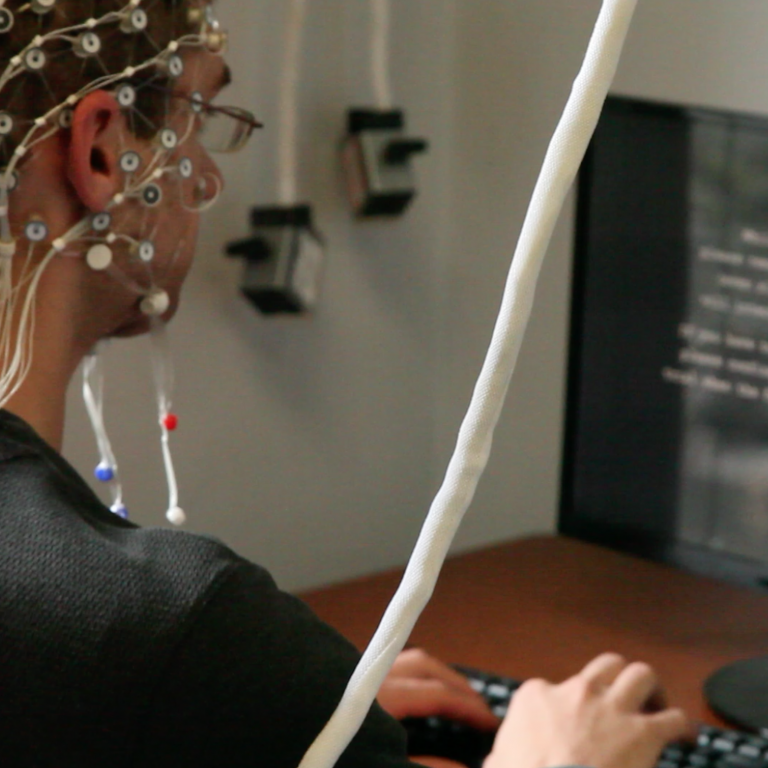Character and morality education have existed in schools since schools were invented (Doyle, 1997; Hunter, 2000), often in response to a recurring belief that a society has slid into a moral decline. In the early 2000s, Joel Taxel and I studied proposals submitted to the U.S. government for funding to support character education. We identified two distinct conceptions of character and character education, and found that they had been developed in two distinct regions of the U.S. Further reading found character education efforts available through non-Western ideologies that departed from both. The different conceptions, while overlapping in some respects, vary according to the cultural values of those who embrace them, suggesting that the concept of character is local, ideological, and relational.
The Ideological Character of Character Education

If, however, wisdom is locally socialized and determined, all judgment is fundamentally biased and culturally formed by the experiences, knowledge, understanding, and conception of virtue that presumably accompany it in wise conduct
In that sense, wisdom is also a local matter. Wisdom is commonly believed to involve thinking and acting through accumulated knowledge, experience, understanding, common sense, and insight; and be characterized by unbiased judgment, compassion, experiential self-knowledge, self-transcendence and non-attachment, and a set of virtues (e.g., responsibility) that are often listed as character qualities. If, however, wisdom is locally socialized and determined, all judgment is fundamentally biased and culturally formed by the experiences, knowledge, understanding, and conception of virtue that presumably accompany it in wise conduct. Shweder (1991) asserted that “children develop the moral ideas they have because local guardians of the moral order (parents, teachers, peers) re-present and convey to children powerful morally relevant interpretations of events” (p. 191). Morality thus embodies those ways of thinking and acting that serve the ends of particular groups of people and is thus ideological and political.
Character and character education, like all political thinking, remain critical points of dispute. The four conceptions of character briefly discussed include two U.S. mainstream Western derivations, and two from outside this purview from the perspective of what are colonially known as indigenous cultures. These are featured as representative of the general phenomenon that character education emerges from cultural, not universal, values, and are not a comprehensive review of global character concepts. (Please see the Templeton World Charity Foundation for Global Innovations for Character Development for further reading and resources).
1) Didactic Approaches: Instilling Character in Errant Youths
Perhaps the most widely-employed character education programs are didactic in nature, purporting to teach timeless values to errant youth through authoritarian means. Lickona (1993) argues for “a recovery of shared, objectively important ethical values” (pp. 3-4), hearkening to what Leming (1994) calls “an ideal state that existed at some indeterminate point in the past. At that time, a set of cultural values was effectively taught to all children and there was a shared consensus in society regarding those values” (p. 124). Although many of this approach’s champions are located in the Northeastern U.S., we found it explicitly articulated in proposals submitted by states from the Deep South where authoritarian social structures remain in place, e.g., in the top-down plantation organizational style common to the region.
Didactic approaches reject the relativism following from the cultural changes of the Sixties, the influence of poststructuralism, the emergence of multiculturalism, and other movements predicated on the decentering of authority. They instead embrace traditional values taught through a mission to, as they say, indoctrinate youth with core common value systems of the community (Ryan, 1996). Young people, in this conception, are inherently uncivilized and in need of moral training. Because children are, at heart, inclined to self-centered and malicious behavior, virtuous adults need to inculcate acceptable behavior through exhortations, rewards, and punishments.
Didactic approaches...indoctrinate youth with core common value systems of the community
This perspective foregrounds the individual as the locus of character education. Lickona (1993) asserts that the 1960s brought on a personalism that questioned authority and destabilized society with sexual promiscuity and other immoral behaviors. The target of character development is on personal rather than civic character (Leming, 2001). In this sense, the problems are rooted in individual flaws, and not the social systems that limit their possibilities.
Lickona’s Center for the 4th and 5th R’s takes the perspective that character traits are universal rather than local and cultural, apparently generalizing from himself and people like him to the whole of humanity. He asserts the presence of core traditional and ethical values with objective worth and universal validity, grounded in religious traditions yet transcending religious and cultural differences as part of human nature and common humanity.
Education, in this view, should rely on what Ryan (2003) calls the language of character: respect, responsibility, commitment, and right and wrong, not on therapeutic concepts such as self-esteem, inappropriate behavior, or adjustment. Didactic, behaviorist instruction in values ought to constitute character education. William Bennett (1980), for instance, argues against allowing children reflection or judgment: “emphasis on morality as ‘cognition’ can lead to a serious error in a child’s understanding of what a moral life consists. . . . it is often the case that the more a person has a fixed and steady disposition, the less, not the more, he has to make a decision at all” (p. 30). This approach fits well with authoritarian schooling in general, placing students in roles through which they are indoctrinated into adult value systems, ideally without thinking about, reflecting on, or challenging their relevance to their lives. Turiel (2002) argues that many character traits such as punctuality and loyalty, serve to socialize young people into the conventions that serve a particular social and moral order. As I’ll next review, that order rests on cultural, rather than universal, conceptions of morality.
2) Reflective, Community-Based Approach
A very different approach was evident in conceptions emerging from the Upper Midwest, a region shaped in part by the European socialist diaspora of the 1800s. It emphasizes the collective rather than the obstreperous individual, assuming that the focus of character education needs to be on the way the school environment works and feels. The emphasis ought to be on transforming educational structures rather than forming individual characters.
Community-based character educators, while eschewing radical moral relativism, assume that perspective-taking helps people understand different constructions of the same situation. Complex moral dilemmas, in this conception, are not well served by indoctrination into absolute moral codes; rather, they require reflection on moral choices that must be weighed against one another in complex moral circumstances.
Complex moral dilemmas...require reflection on moral choices that must be weighed against one another in complex moral circumstances
Hartshorne and May (1928) found that character is “situationally specific. . . . the mere urging of honest behavior by teachers or the discussion of standards and ideals . . . has no necessary relation to conduct. . . . The prevailing ways of inculcating ideals probably do little good and may do some harm” (p. 413; cited in Leming, 1997, p. 34). In contrast to hortatory transmission pedagogies, a constructivist conception suggests the role for relativism to play in moral development, allowing for interpretation and perspective-taking without being agnostic about the morality of mass murderers and other societal pariahs. This approach shifts attention from the deviant individual to the social context in which deviancy is defined. To Purpel (1997), bad behavior is a matter of interpretation in the context of social systems, which may themselves be inequitable in structure. The institution of school, rather than the conduct of individuals, should be the focus of interventions so that school is less punitive, and more nurturing and inclusive.
This perspective seeks to form a just, democratic, inclusive community by engaging students in inquiry into moral dilemmas so that they form their own judgments and develop their own wisdom. This approach requires the inclusion of non-dominant perspectives in the explorations (Gay, 1997). This ethos requires an inductive, “experientialist curriculum, but one that centers inquiry and action together (praxis) on the experience of injustice—on first exposing it and then on working to overcome it” (Schubert, 1997, p. 27).
Noddings (1997) argues that, in caring communities, relational rather than personal virtues matter most. Relationships require attention to the affective dimensions of experience. Berkowitz (2002), Meier and Schwartz (1995), Smagorinsky and Taxel (2005), and others identify empathy as a quality through which people may see situations from the perspectives of others. This emphasis on relationships produces what Berkowitz (2002) calls a moral atmosphere to help guide action.
Dating to Horace Mann’s establishment of mass public education in the U.S. in the mid-1800s, moral instruction has been part of the assimilative role of schools enrolling immigrants (in Mann’s era, largely European) and others considered to be in need to gravitation toward a national identity (Smagorinsky, in press). This tension between forging a national character and respecting individual or subgroup identities pervades life in the U.S. to this day. The perspective available in the Upper Midwest proposals emphasizes the broader community, which may not be structured equitably, as the locus of attention for character education.
The two conceptions outlined thus far appear to be the primary approaches practiced in U.S. schools. Other sorts of cultures have developed notions of character that emphasize different values. For illustrative purposes, I provide capsule descriptions of character education approaches from two perspectives representing collectivist cultures that foreground human relationships in social interactions. Such societies often conceive of the self in relation to others, a value that includes character as part of a broader worldview that is not driven by such as notions as punctuality, a commonly-identified character trait in societies driven by the Protestant Work Ethic. Capitalistic societies with industrial schedules typically run on clock time in which the hands on the clock signal the beginning and ending of an activity. In contrast, event time is practiced in cultures where what matters most is the quality of the immediate social experience, making punctuality an afterthought. This conception of time illustrates how notions of character are embedded in larger value systems that encompass political, economic, and social organizations from which notions of character emerge. The following two approaches to character education are representative of this fundamentally relational understanding of character.
3) Native American Spiritual Perspective
Native American educators Jacobs and Jacobs-Spencer (2001) view character as extending beyond human communities and encompassing “intimate relationships of living things” (p. vii). They argue that moral relationships extend to the natural environment, describing encounters with hawks and other creatures whose example informs their development of character and life choices. In this reciprocal view, animals, not people, are the original teachers of virtues, and remain so in the modern world. This animistic perspective stands outside Western conceptions of character, where it is viewed by many anthropologists (e.g., Clifton, 1990) as primitive and less socially evolved. Jacobs and Jacobs-Spencer (2001) invoke the Lakota expression, Mitakuye Oyasin (We are all related), to emphasize their extension of community beyond humans and into the whole of the biota. They stress the importance of the spiritual, interconnected, interdependence of the earth and its creatures. These values are nurtured from birth and provide the basis for the development of good character.
Moral relationships extend to the natural environment
Jacobs and Jacobs-Spencer (2001) believe that there is a set of universal values that have been identified in cultures throughout the world. The traits they identify, however, are different from those valued by didactic character educators, as are their interpretation of how a trait might be understood. For example, they list fortitude, courage, patience, honesty, humility, and generosity as universal character traits. To illustrate courage, their exemplar is the hawk; this engagement with nature is decidedly absent from Western conceptions of character, which is often rooted in the Biblical imperative that people should establish dominion over the earth and its non-human inhabitants, rather than exist as equal partners and stewards of a healthy planet. In spite, then, of the shared claim to universal notions of character, they articulate a vision that is grounded within a specific set of cultural values.
4) Sub-Saharan Ubuntu Notion of Character
Many African sub-Saharan societies have based their notion of character and character education on the principal of ubuntu, which “defines the individual in terms of the idea of humanity, in general, and about human interdependence and relationship with other humans, in particular. In other words, ubuntu takes the essence of humans to be relational; that is, humans have a shared humanity or are embedded in the community of humanity” (Etieyibo, 2017, p. 312). Etieyibo quotes Mbiti’s interpretation of ubuntu as meaning “I am because we are, and since we are, therefore, I am.” One’s humanity is linked to the humanity of others, requiring mutual respect as the basis of community life.
...defines the individual in terms of the idea of humanity, in general, and about human interdependence and relationship with other humans
Etieyibo identifies a set of traits accompanying this philosophy: harmonious living amidst the interconnectedness and bondedness of all things in the cosmos, harmony with the immediate environment, and community with nature and relationships with other people. This approach is realized in such proverbs as “Your pain is my pain, my wealth is your wealth, and your salvation is my salvation.” People are thus reciprocally bound and invested in one another’s experiences, as indicated in the Urhobo proverb: “If you want to go fast go alone, if you want to go far go together.”
This journey is achieved through collaborative inquiries that require an openness to the experiences of others and willingness to think critically and develop moral understandings, not through the moral exhortations of Westernized approaches but through inductive approaches to moral problems through which children develop critical thinking abilities designed to promote a more harmonious society.
A Brief Conclusion
This essay has reviewed four different conceptions of character, each producing a particular form of moral wisdom. If wisdom concerns the practical actions that enable people to flourish, it’s important to understand how people are understood to flourish from different worldviews. In a Western industrial society, punctuality serves the machinery of the economy, which presumably allows individuals to flourish with financial prosperity. Yet this value might involve the degradation of the earth in pursuit of profits, which would be anathema to a community organized according to ubuntu spirituality. Each conception reviewed here as representative of the cultural diversity of character education is designed to serve the societal interests of the people who have developed them. In spite of claims to universality in some, the presence of many indicates that claims to universality follow from generalizations from one’s own socialization to the whole of humanity.
Character education appears to be largely a process of shaping people into behaviors that serve a political entity’s teleological ends. Given the many social arrangements that human societies have formed over time, the wisdom available to people is understood in terms of the contexts in which morality develops. Those contexts are political, economical, and ideological and provide the context for conceptions of morality, character, and wisdom.
About the author: Peter Smagorinsky is Distinguished Research Professor in the Department of Language and Literacy Education at The University of Georgia, emeritus; and Distinguished Visiting Scholar at the Universidad de Guadalajara, Jalisco, Mexico. From 2012-2020 he served as the faculty advisor to the student-edited Journal of Language and Literacy Education at UGA; and from 1996-2003 he coedited, with Michael W. Smith, Research in the Teaching of English. Recent awards include the 2020 Horace Mann League Outstanding Public Educator Award, 2018 International Federation for the Teaching of English Award, and 2018 Distinguished Scholar recognition by the National Conference on Research in Language and Literacy. His research and teaching take a sociocultural approach to issues of literacy education, literacy teacher education, and related social concerns. His interest in character education began when the state of Georgia developed a federally funded character education program. He began writing about that program in relation to the teaching of English, and extended that interest to the notions of character and character education available in proposals submitted for federal funding and academic publications on character education including The Discourse of Character Education: Culture Wars in the Classroom, The discourse of character education: Ideology and politics in the proposal and award of federal grants, and The implied character curriculum in vocational and nonvocational English classes: Designing social futures for working class students and their teachers. This work, in turn, helped to inform his work in curriculum and instruction in many subsequent publications. Contact the author at smago@uga.edu.
Join the discussion on character education and wisdom on the Facebook, LinkedIn, or Twitter!
References
- Bennett, W. J. (1980). The teacher, the curriculum, and values education development. In M. L. McBee (Ed.), Rethinking college responsibilities for values (pp. 27-34). Jossey-Bass.
- Berkowitz, M. W. (2002). The science of character education. In W. Damon (Ed.), Bringing in a new era in character education ( pp. 43-63). Hoover Press.
- Clifton, J. (1990). The invented Indian: Cultural fictions and government policies. Transaction Books.
- Doyle, D. (1997). Education and character: A conservative view. The Phi Delta Kappan,78(6), 440-443.
- Etieyibo, E. (2017). Moral education, ubuntu and ubuntu-inspired communities. South African Journal of Philosophy, 36(3), 311–325.
- Gay, G. (1997). Connections between character education and multicultural education. In A. Molnar (Ed.), The construction of children’s character: Ninety-sixth yearbook of the National Society for the Study of Education (pp. 97-109). University of Chicago Press.
- Herbert, W. (1996). The moral child. U. S. News & World Report, 3, 58.
- Jacobs, D. T., & Jacobs-Spencer, J. (2001). Teaching virtues: Building character across the curriculum. Scarecrow Press.
- Leming, J. S. (1994). Character education and multicultural education: Conflicts and prospects. Educational Horizons, 72(3), 122-130.
- Leming, J. S. (1997). Research and practice in character education: A historical perspective. In A. Molnar (Ed.), The construction of children’s character: Ninety-sixth yearbook of the National Society for the Study of Education (pp. 31-44). University of Chicago Press.
- Leming, J. S. (2001). Historical and ideological perspectives on teaching moral and civic virtue. International Journal of Social Education, 16(1), 62-76.
- Lickona, T. (1993). The return of character education. Educational Leadership, 51(3). Available at http://www.ascd.org/readingroom/edlead/9311/lickona.html
- May, M. A., & Hartshorne, H. (1927). Experimental studies in moral education. Religious Education, 22, 710-718.
- Meier, D., & Schwarz, P. (1995). Central Park East Secondary School. In M. W. Apple & J. A. Beane (Eds.), Democratic schools (pp. 29-30). Association for Supervision and Curriculum Development.
- Nash, R. J. (1997). Answering the “virtuecrats”: A moral conversation on character education. Teachers College Press.
- Noddings, N. (1997). Character education and community. In A. Molnar (Ed.), The construction of children’s character: Ninety-sixth yearbook of the National Society for the Study of Education (pp. 1-16). University of Chicago Press.
- Hunter, J. D. (2000). The death of character: Moral education in an age without good and evil. Basic Books.
- Purpel, D. E. (1997). The politics of character education. In A. Molnar (Ed.), The construction of children’s character: Ninety-sixth yearbook of the National Society for the Study of Education (pp. 140-153). University of Chicago Press.
- Ryan, F. J., Sweeder, J. J., & Bednar, M. R. (2001). Drowning in a clear pool: Cultural narcissism, technology, and character education. Peter Lang.
- Ryan, K. (1996). Character education in the United States. Journal-for-a-Just-and-Caring-Education, 2(1), 75-84.
- Schubert, W. H. (1997). Character education from four perspectives on curriculum. In A. Molnar (Ed.), The construction of children’s character: Ninety-sixth yearbook of the National Society for the Study of Education (pp. 17-30). University of Chicago Press.
- Shweder, R. A. (1991). Thinking through cultures: Expeditions in cultural psychology. Harvard University Press.
- Smagorinsky, P. (in press). The great equalizer of the conditions of [humanity]: How transformative can schools be when society itself remains inequitable and quarrelsome? In D. C. Berliner & C. Hermanns (Eds.), Public education: The cornerstone of American democracy. Teachers College Press.
- Smagorinsky, P., & Taxel, J. (2004). The discourse of character education: Ideology and politics in the proposal and award of federal grants. Journal of Research in Character Education, 2(2), 113-140.
- Smagorinsky, P., & Taxel, J. (2005). The discourse of character education: Culture wars in the classroom. Erlbaum.
- Turiel, E. (2002). The culture of morality: Social development, context, and conflict. Cambridge University Press.
- Wynne, E. A. (1989). Transmitting traditional values in contemporary schools. In L. B . Nucci (Ed.), Moral development and character education: A dialogue (pp. xx-xx). McCutchan.
- Wynne, E. A. (1997). For-character education. In A. Molnar (Ed.), The construction of children’s character: Ninety-sixth yearbook of the National Society for the Study of Education (pp. 63-76). University of Chicago Press.




